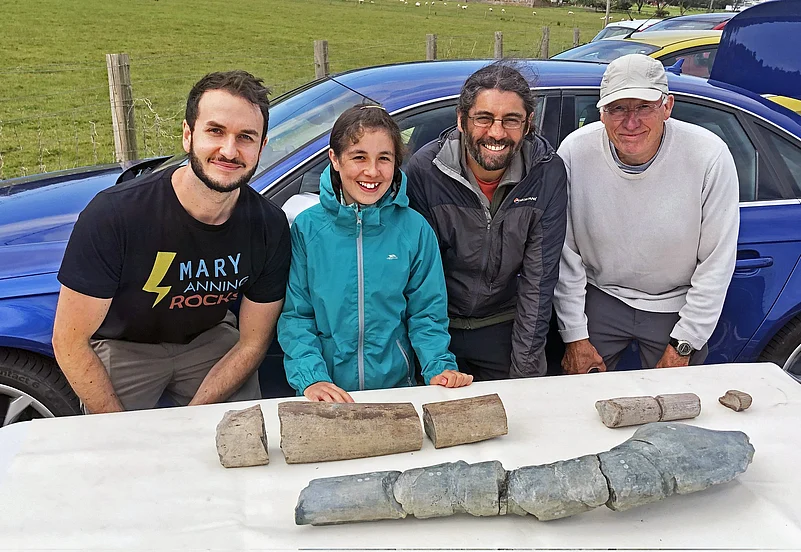A jaw-dropping discovery by a father-daughter fossil-collecting team has unearthed what scientists believe to be the largest marine reptile to ever roam the Earth's oceans. Found on a beach in Somerset along the English coast, the jawbone, measuring over 6.5 feet long, belonged to a newfound species dubbed Ichthyotitan severnensis, or the "giant fish lizard of the Severn."
The remarkable find, made by Justin and Ruby Reynolds, residents of Braunton, England, sheds new light on the prehistoric giants that once dominated the seas.
The Reynolds duo stumbled upon the first pieces of the jawbone back in May 2020 while scouring the Blue Anchor beach for fossils. Their initial discovery sparked excitement, prompting them to reach out to Dean Lomax, a palaeontologist at the University of Manchester, who specialises in ichthyosaurs.
Further investigation revealed that the newfound jawbone closely resembled one found by fossil collector Paul de la Salle in 2016, about 6.2 miles away. Collaborating with de la Salle and other researchers, Lomax pieced together the puzzle, confirming the existence of a previously unknown species of ichthyosaur.

The reconstructed jawbone, completed in October 2022, provides crucial insights into the anatomy of these ancient creatures. Dating back 202 million years to the end of the Triassic Period, Ichthyotitan severnensis likely ruled the oceans alongside dinosaurs.
Marcello Perillo, a graduate student involved in the study, analysed the microscopic structure of the bones, revealing that the reptile was still growing at the time of its demise. This suggests that an adult Ichthyotitan severnensis could have surpassed the size of a blue whale, the largest known animal on Earth.
The significance of this discovery extends beyond mere fascination with ancient giants. Understanding the ecology and evolution of marine reptiles like Ichthyotitan severnensis is crucial for unravelling the mysteries of ancient ocean ecosystems. These creatures played a vital role in shaping the dynamics of prehistoric marine life, influencing food chains and ecological niches.
The find, soon to be displayed at the Bristol Museum and Art Gallery in the UK, underscores the importance of citizen science in palaeontology. Ruby Reynolds, just 15 years old at the time of the discovery, has not only contributed to a groundbreaking scientific finding but has also left her mark in naming a species of prehistoric reptile.



























